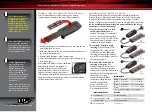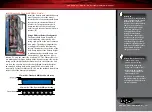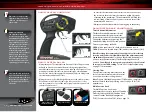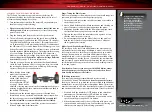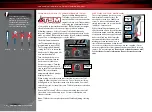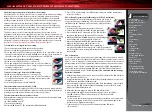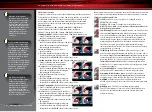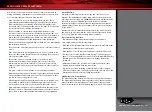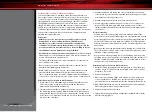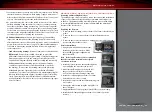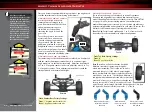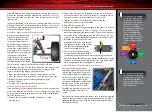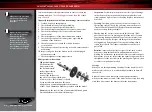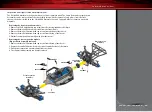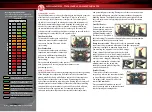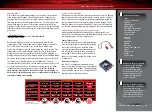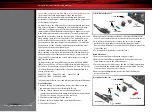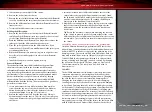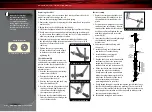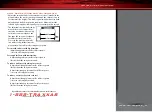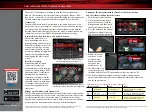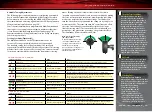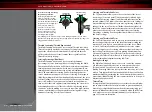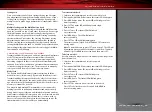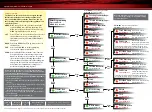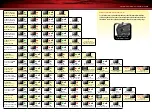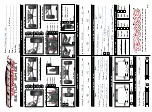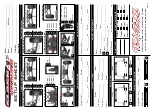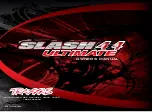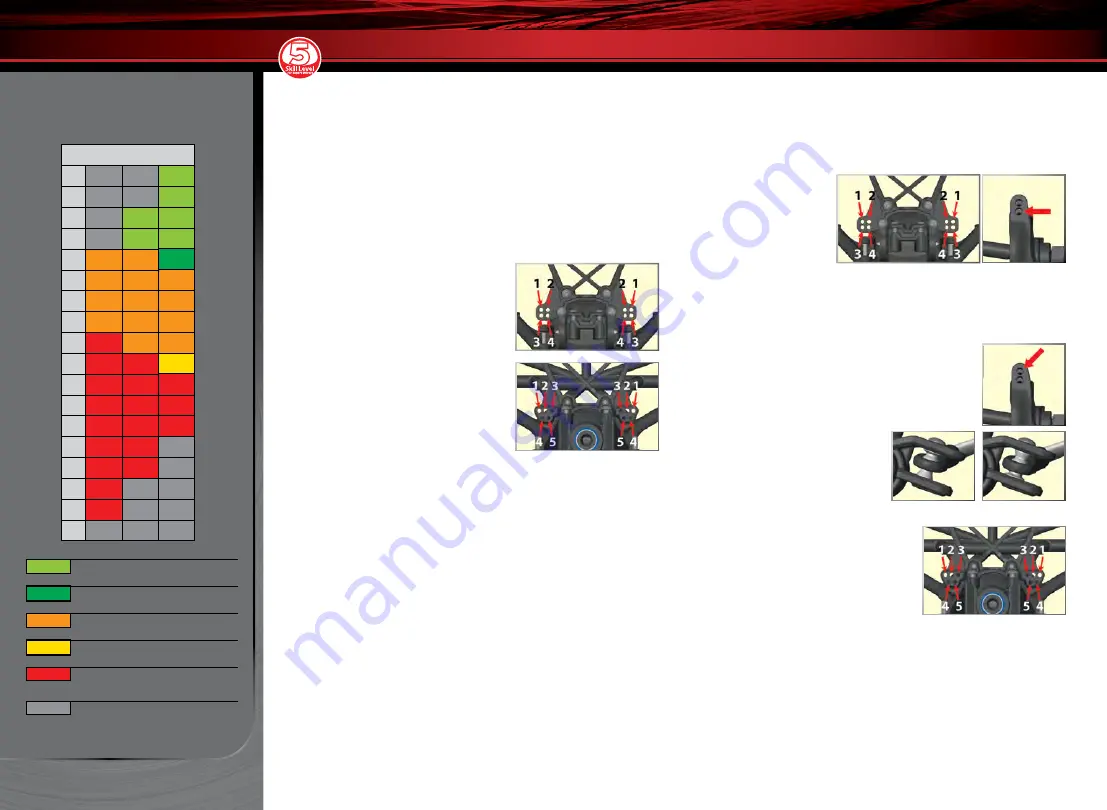
26 • SLASH 4X4 ULTIMATE
ADVANCED TUNING ADJUSTMENTS
CAMBER GAIN
Slash 4X4 Ultimate has provisions for adjusting the camber gain geometry
of the front and rear suspension. “Camber gain” refers to an increase
in camber angle as the suspension is compressed. The camber gain of
the vehicle can be changed by moving the camber link attachment to a
different horizontal mounting position. Adjusting the camber gain will
alter the tire contact patch as the suspension is compressed. Making
the camber link shorter will increase the camber gain. This makes the
vehicle more stable over bumps, but reduces traction on smooth surfaces.
Lengthening the camber links has the opposite effect.
Front Camber Gain
To increase the camber gain on the front
suspension, move the inner camber link
ends out to Position 3. Position 4 is the
stock setting.
Rear Camber Gain
To increase the camber gain on the rear
suspension, move the inner camber link
ends out to a different attachment hole
(Position 4 in the image. Position 5 is the
stock setting).
Once you make adjustments to the camber
gain, you may need to re-adjust the static camber to suit
your tuning needs.
ROLL CENTER
Slash 4X4 Ultimate has provisions for adjusting the roll center geometry
of the front and rear suspension. Roll center refers to the virtual axis
around which the chassis will roll when subjected to cornering forces.
The roll center of the vehicle can be raised by mounting the inner
ends of the camber links in a lower position. Raising the roll center will
effectively increase the roll stiffness of the vehicle (similar to installing
sway bars). Adding roll resistance to one end of the vehicle will tend
to add traction to the opposite end. For example, increasing roll
resistance in the rear will provide more traction for the front wheels
and potentially more steering. Raising the roll center on the front and
rear equally will increase overall roll resistance without changing the
handling balance. The default factory locations are designed to make
the truck easier and more forgiving to drive and less likely to traction
roll in turns.
Front Roll Center
To lower the roll center on the
front suspension, move the
inner camber link ends up to
a different attachment hole
(Position 1 or 2 – Position 4 is
the stock setting). To lower the roll center further, move the outer camber
link ends to the lower position on the C-hub.
Bump steer correction
- “Bump steer” refers to unwanted steering
inputs caused by suspension movement. Slash 4X4’s suspension
geometry is designed to minimize bump-steer. If
you are using the upper hole on the C-hub (image
A) and either of the two lower holes on the shock
tower (positions 3 or 4 in “Front” image), the tie rod
ball should be oriented with the large flat end on top
(stock position - image B). When using
any other combination of camber link
attachment points, the tie rod ball
should be oriented with the large flat
end on the bottom (C).
Rear Roll Center
To lower the roll center on the rear
suspension, relocate the inner camber links
to one of the upper holes (position 1, 2, or
3 in image) in the upper row of the rear
camber link attachment.
Once you make adjustments to the roll
center, you may need to re-adjust the static
camber to suit your tuning needs.
Front
Front
C-hub
Rear
Rear
B
C
A
Gearing Compatibility Chart:
The chart below shows recommended
gear combination ranges for your model.
Spur Gear
Pinion Gear
50
52
54
9
-
-
17.08
10
-
-
15.37
11
-
13.45
13.97
12
-
12.33
12.81
13
10.95
11.38
11.82
14
10.16
10.57
10.98
15
9.49
9.87
10.25
16
8.89
9.25
9.61
17
8.37
8.71
9.04
18
7.91
8.22
8.54
19
7.49
7.79
8.09
20
7.12
7.40
7.68
21
6.78
7.05
7.32
22
6.47
6.73
-
23
6.19
6.43
-
24
5.93
-
-
25
5.69
-
-
26
-
-
-
Thick black border indicates stock settings.
Preferred gearing for off-road and
extreme terrain, 3S LiPo
Out of Box Setup, recommended for most
running, 6 or 7-cell NiMH, 2S LiPo
Recommended for high-speed running on
smooth hard surfaces only
Included optional gearing, for high-speed
running only
Fits, for high-speed runs only, not
recommended for use with NiMH batteries
High-current LiPo batteries required.
Doesn’t fit

